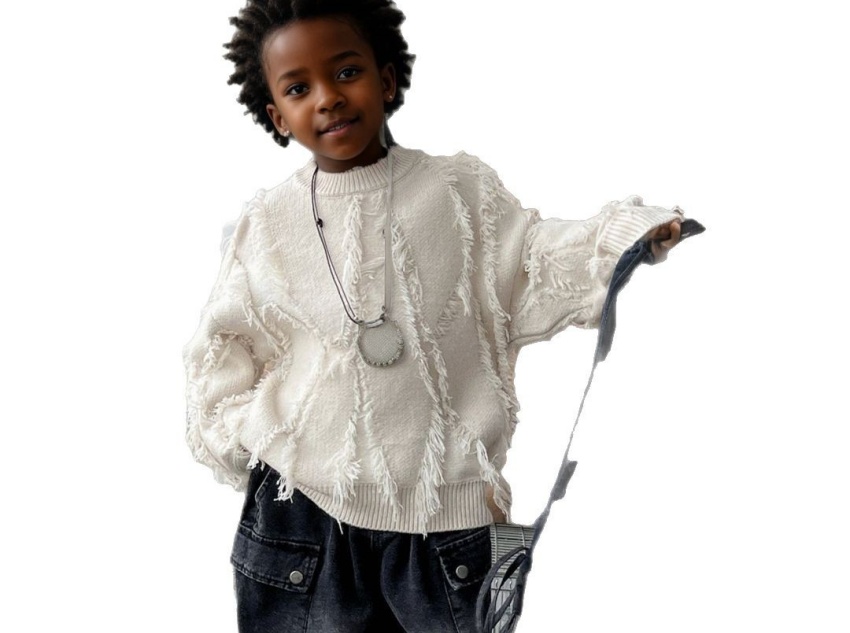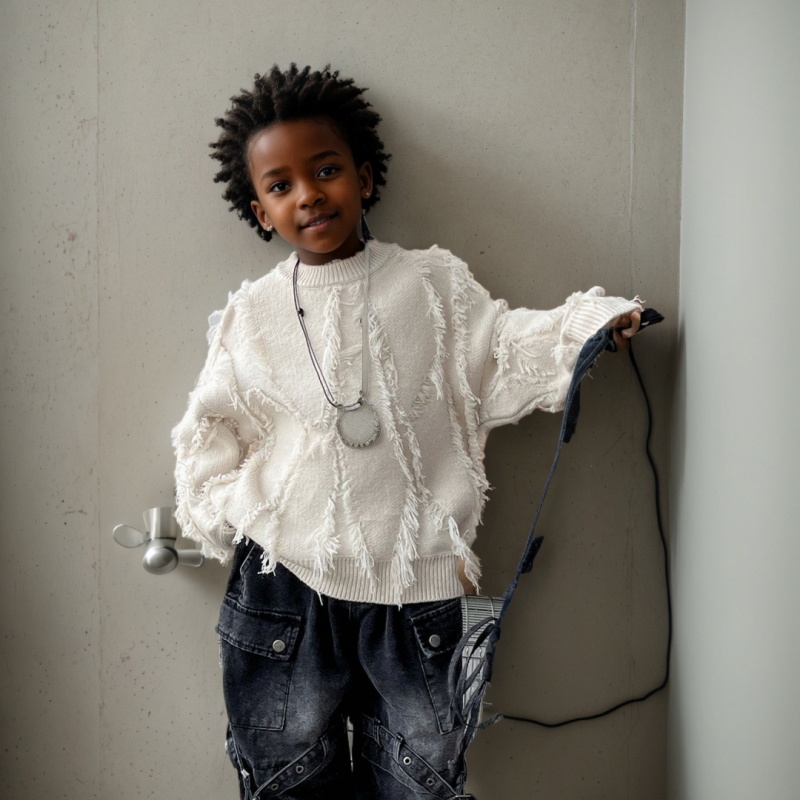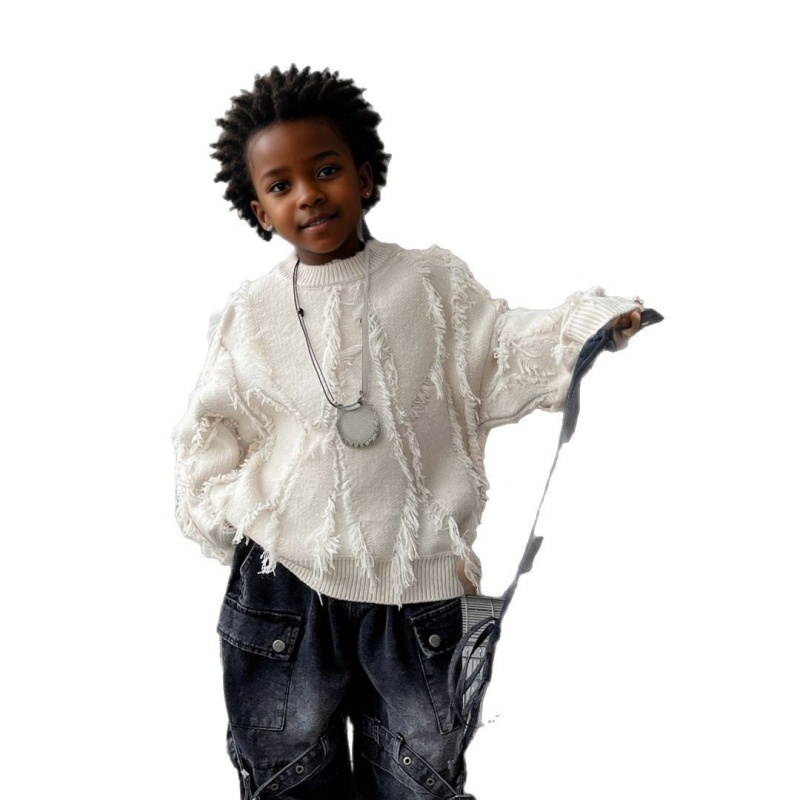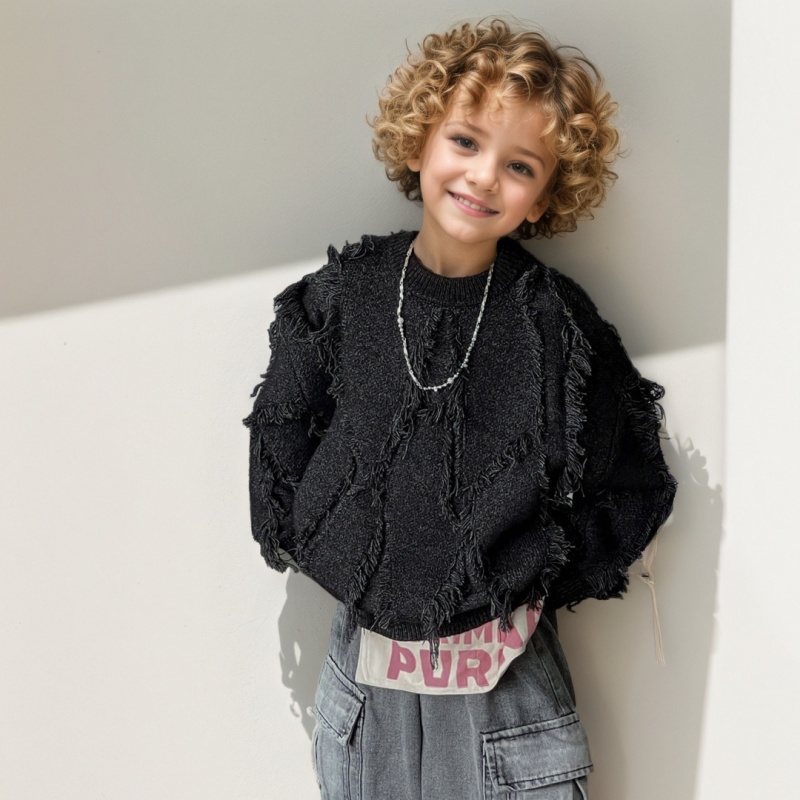The children’s sweater in the picture adopts a unique craftsmanship design.
From the appearance, the surface of the sweater presents an irregular tassel-like texture, which is achieved through special cutting and filament drawing techniques. First, the knitted sweater fabric is cut regularly or randomly, and then the cutting edges are processed to make some yarns naturally loose, creating a tassel effect, which adds layers and a sense of fashion to the sweater.
In terms of knitting techniques, the overall texture of the sweater has a certain regularity and is woven by combining multiple knitting methods. For instance, the main part is woven with plain needles, ensuring the comfort of wearing and the flatness of the fabric. The areas with texture changes are created through techniques such as adding stitches, reducing stitches, and highlighting stitches to form undulating pattern effects, making the sweater visually more three-dimensional.
The collar, cuffs and hem of the sweater are knitted with ribbed weaving techniques. This process has good elasticity and can closely fit the body, serving as a closing effect. It can not only prevent cold air from entering but also maintain the shape of the clothes to a certain extent, avoiding deformation due to wearing and washing.











